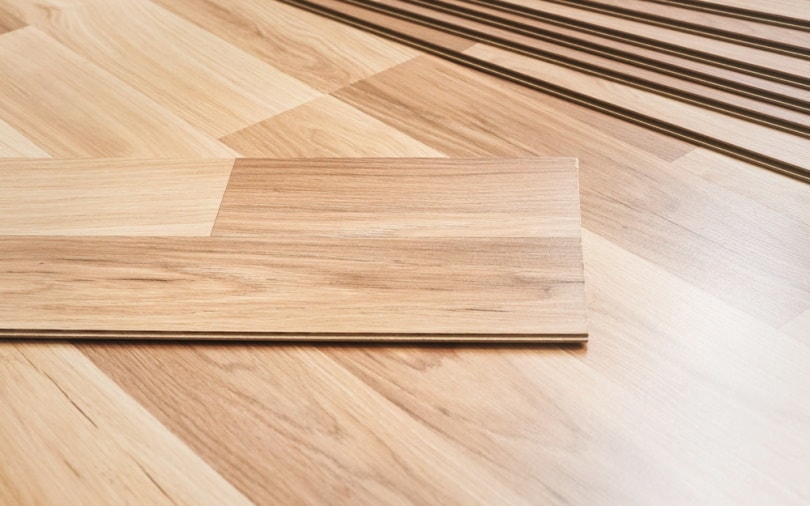How to Insulate Your Attic: 5 Tips & Tricks
-
Ed Malaker
- Last updated:

Having a poorly insulated attic can raise your heating bills in the winter and your cooling bills in the summer. It can also lead to damage to your roofing materials. But many people aren’t sure where to start when it comes to insulating the attic or what materials to use. If this sounds like your situation, keep reading as we provide you with a list of tips and tricks that you can use to finish the job.
The 5 Tips & Tricks on How to Insulate Your Attic
1. Attach to the Bottom of the Attic Rafters

- Type: Insulation panels, 48 or 72 inches
If you don’t have the panels up for your walls yet, a great way to add insulation to your attic is to staple large 48–72-inch panels to the bottom of the rafters. The large panels make it quick and easy to insulate the room. You can bind the seams using electrical tape or choose a brand with an incorporated adhesive line.
2. Attach to the Roof Between the Rafters
- Type: Insulation panels, 16 or 24 inches
If you have small 16–24-inch panels, installing them between the rafters is best. Stapling the insulation edging to the side of the rafters will hold it in place and enable you to leave a 2-inch air gap between the insulation and roof sheathing. This small air pocket will help the insulation work better.
3. Attach to the Floor

- Type: Perforated panels
Adding insulation to your attic floor can help dramatically lower your heating and air conditioning costs by helping to separate the attic from the rest of the home. Use large perforated panels for best results. You can add the new panels directly over any older insulation for even better protection.
4. Drill Holes to Blow In Insulation
- Type: Granular or foam
If you have a finished attic, you can carefully remove the wall panels to use one of the previous methods, or you can drill small holes in the wall to use blow-in insulation between the rafters. This method can take longer than the others because you have to find each of the rafters using a stud finder and place an inconspicuous hole between them near the roof. Then you use a special tool to blow in the granular or foam insulation without needing to remove the wall.
5. Seal All Duct Work

- Type: Spray foam
If you have any ducts, electrical boxes, or other components in your attic, seal up any air spaces around them with spray foam. This type of insulation will help reduce drafts and prevent animals or insects from using it as an entranceway into your walls.
How Much Does Insulation Cost?
The insulation cost can vary from $1 to $7 per square foot, depending on the type that you are installing. You can expect to spend between $1,500 and $3,500 to complete the attic, especially if there is no insulation in there already. If you need to remove and replace old insulation, you can expect to pay $2–$9 per square foot.
- Use reflective tape along the edges of the insulation panels to help secure them in place. This creates a vapor barrier that helps extend the lifespan of your insulation.
- If your house is more than 35 years old, test any insulation for the presence of asbestos before you begin to work on it.
- Make sure there is plenty of ventilation in your attic. Install vents and fans if you need them to help remove hot air in the summer, which could cause the insulation to degrade faster.
- Check around your attic windows for small gaps that might be allowing in drafts. Fill the gaps with spray foam for a tight seal.
- Inspect your attic carefully before you start any work, and fix any leaks that you find that might damage the new insulation.
- Wear a long-sleeved shirt to protect your skin when using loose-fill insulation.
- Use small hose movements to keep the dust down and maintain good visibility when working with loose-fill insulation.
- Use portable lights for better visibility when installing insulation.
- Work from the corners when installing your insulation.
Summary
If you are working with an unfinished attic, installing insulation can be easy if you use panels. Install them between the rafters, leaving a small air pocket between the insulation and the sheathing, or use large panels that you can attach to the bottom of the rafters before putting up your walls. If your walls are already in place, you will need to drill small holes near the roof to blow-in the insulation. Remember to fill any gaps around the windows, ductwork, electrical boxes, etc. with spray foam to reduce drafts. Adding insulation panels to the attic floor can help keep the warm and cold attic air from entering the rest of the house, thus lowering HVAC costs.
Featured Image Credit: Radovan1, Shutterstock
Contents

